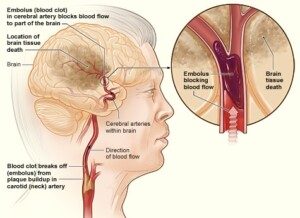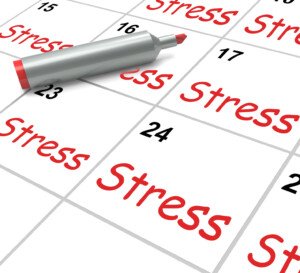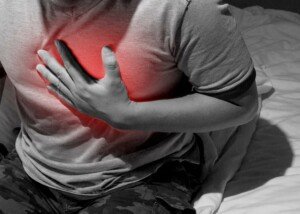Are you constantly under stress and worried about getting a stroke?
The good news is there’s a certain kind of exercise that will dramatically lower your chance of getting a stroke.
This type of exercise is called “hormonal.”
I’m a former certified personal trainer and I highly recommend this type of exercise that raises levels of anabolic hormones that counteract the stress hormones that thicken the blood.
What a Doctor Says
“The stress response, triggered by fear, stimulates a profound and sudden flooding of stress hormones, adrenaline and cortisol, into our blood stream,” says cardiologist John M. Kennedy in an interview for a previous article of mine.
A report in the August 2012 Journal of Neurology, Neurosurgery and Psychiatry says that chronic stress, fueled by a major life stressor and a Type A personality, is a high risk factor for stroke.
The Type A personality is the hard-driven, aggressive type, quick to show anger or get into arguments, and prone to fuming in stressful situations.
Though one might argue that this type of personality is also at higher risk for engaging in behaviors that increase stroke risk, such as smoking, drinking and eating junk food, the study (Egido et al) showed that stress is an independent risk factor for stroke.

National Heart Lung and Blood Insitute
Exercise will make a difference, but not just any exercise; it must be “hormonal” exercise — the type of exercise that triggers elevated secretion of human growth hormone (HGH) and testosterone.
These hormones oppose cortisol, the “stress hormone,” and adrenalin.
What is hormonal exercise?
Hormonal exercise helps unthicken the blood that stress thickens. When we are under chronic stress, our body prepares for a fight or flight.
The blood thickens and the blood platelets get sticky (making it more clottable) to protect us from bleeding to death from a gash during the fight or flight. Problem is … with modern man, the fight or flight never happens.
Instead we remain immobilized in a traffic jam, an office cubicle, a business meeting — places where we can’t act out physically.
Stroke in the Making
Our blood stays thickened and sticky. If your blood remains this way chronically, you are at much higher risk of ischemic stroke (blood clot in the brain), since thick blood is more prone to clotting!
“Getting stuck in traffic can lead to increases in stress hormones which over time can wreak havoc on our cardiovascular tissue,” adds Dr. Kennedy, medical director of preventative cardiology and wellness at Marina del Rey Hospital, and author of the book, “THE 15-MINUTE HEART CURE: The Natural Way to Release Stress And Heal Your Heart In Just Minutes A Day.”
This is why blood thinning drugs are recommended to people at risk for stroke. Another way to “unthicken” blood is via hormonal exercise.
The intense physical exertion from a fight or flight releases HGH and testosterone. These cancel out the stress response that thickens the blood.
In a modern society, fight or flight exercise comes in two forms, both of which incite the hormonal response that opposes stress hormones:
High Intensity Interval Training and Heavy Weightlifting
- Jogging for an hour won’t cut it.
- Standing on wobble boards and pressing little dumbbells overhead won’t cut it.
However, dashing up a few flights of stairs as fast as possible while holding a 10 lb. dumbbell in each hand (or faster without a weight) will spark a completely different environment in your body that will immediately start going to work at hacking away at the stress hormones.

Intense exercise, aka “hormonal,” is a huge weapon against stroke, especially in stressed people.
In a nutshell, hormonal exercise consists of very brief bouts or bursts of HIGHLY INTENSE exertion, alternating with a few minutes or even five minutes of casual effort.
Imagine, for example, sprinting up a hill, multiple staircases or bleacher steps as fast as you can, boom boom boom — until you just can’t take another step.
You then pace very slowly while you gasp for air, letting your body recover. After several minutes you go all-out again — for only 15 seconds, maybe 30 seconds.
Resistance Training and Stroke
Heavy weightlifting such as an eight repetition max of an all-body exercise such as the deadlift will also help lower the risk of stroke in stressed men and women.

Exercise like this will change the hormonal environment in your body and protect against chronically thickened blood that leads to blood clots in the brain: stroke!


 Double board certified in cardiovascular disease and also internal medicine,
Double board certified in cardiovascular disease and also internal medicine, 
























